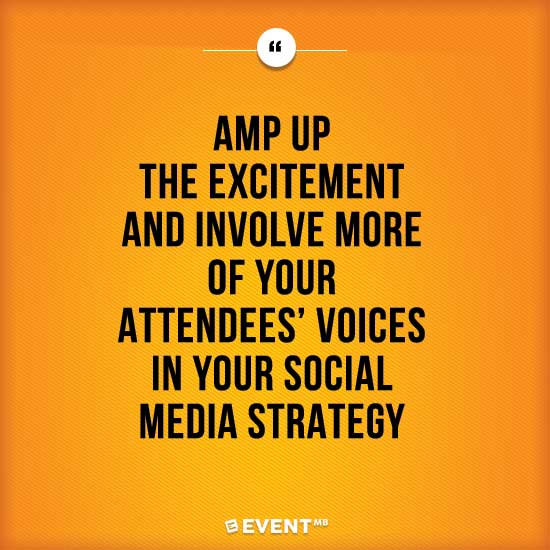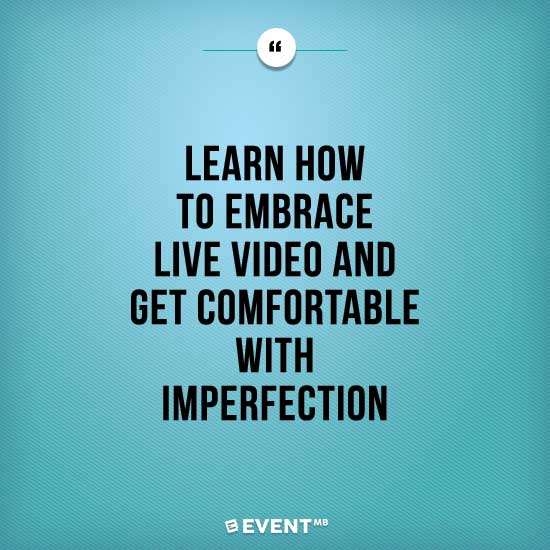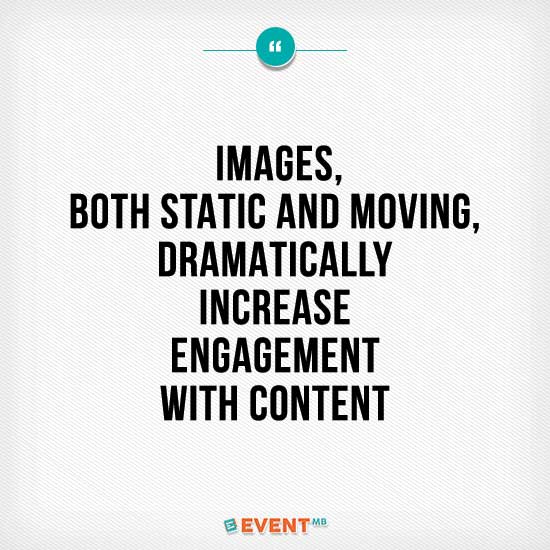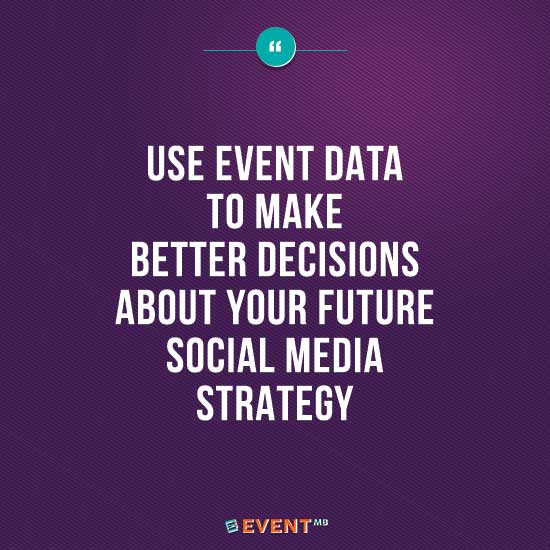Even if you prefer analog over digital, you are probably aware of some massive developments happening in event social media lately. Over the past couple of months, longstanding social media giants like Facebook and Twitter have announced huge changes in algorithms and features while some newer social media tools have delighted users with massive growth and game changing elements. Social media managers are giddy and nervous while they scramble to keep up with what all of this means for the organizations they help. Here are four developments and ideas for how to adapt your own event social media strategy to keep pace.
1. Going Native

The problem with social media is it can be so, well, anti-social for the person managing the communication for an organization or event. Between A/B testing and highly targeted ad demographics, social media communication can seem more machine than man. But many people are beginning to realize they need to move beyond personas and work with their audience directly to create meaningful results with event social media.
“I am working with a volunteer leader to create a social media street team committee that will help us work towards increased brand awareness, engagement, and awareness of our events,” said Adrienne Bryant, member information and database manager for Association of Florida Colleges.
“There is increased interest from our membership regarding interacting via Facebook and Twitter, so we definitely want to build on that momentum. I’m still working on goals and execution, but I would like to use social media to create more buzz around our events, not only with members but prospective members and attendees,” Bryant said.
This is even more important when managing multiple audiences for multiple events.
“Social Media engagement for meetings can vary because of audiences. For example, our Springtime and Finance, Human Resources, and Business Operations Conference aren’t very active on social media, so we have to develop different strategies around the meetings with marketing and social media. Annual, MMCC and Technology have very active Twitter conversations, so it’s important that organizations consider how their target market utilizes social media. It will help determine the amount of resources to devote in helping to promote the programs,” said Sabrina Kidwai, senior PR manager for the American Society of Association Executives.
Ways to incorporate this into your own strategy: Look for opportunities to work with volunteers in creative ways using event social media. Can you have a well-known volunteer do a “takeover” of your event’s Instagram account? In what ways can you amp up the excitement and involve more of your attendees’ voices in your event social media strategy? Don’t settle for a “fix it and forget it” approach to your social media for events and incorporate your attendees and volunteers into the planning and development of your social media campaign in ways that will be meaningful to everyone.
- Invite individuals who represent your event’s audience to participate in content development
- Identify unique ways to use volunteers to capture or create content for social media
- Create a “street team” of attendees who want to add to help generate excitement for your event by creating impromptu experiences for social. This is your chance to explore some guerrilla marketing tactics and get creative.
2. Get Comfortable with Discomfort
You may not think you are camera ready, but life in the age of Snapchat cares for none of that. As newer social media channels increase in popularity, you may need to learn how to embrace live video and get comfortable with imperfection.

“We are expanding our event social media [strategy] into other channels because the younger generations are using something other than the mainstream,” said Elizabeth Aperauch, director of membership and social media for the Florida Physical Therapy Association.
While exploring new tools, remember to choose with discernment and measure your progress.
Kidwai suggests the following:
“If you want to try to use one of the new applications, you need to think about whether your members or potential target audiences are active in that space and will it help you to achieve your overall goal. It’s important for any organization not to over stretch themselves and spread out their SM efforts through every channel because it will be harder to manage it all.”
Ways to incorporate this into your own strategy: Choose a new channel or tool to test and apply the scientific method to it. Don’t be scared of trying new things, but be smart about it and test the results along the way.
- Try new tools, but use a line of scientific inquiry to lead to more productive and successful results.
- Evaluate using a potential new social media tool by first considering your audience – their demographics and behaviors.
- Research people or companies who are using the new technology well and make a note of what they are doing that works so well. If you don’t have time for that, you might contact a reputable consultant and offer to pay for an hour’s worth of his or her time for a checklist of best practices. Forewarned is forearmed.
3. The Eyes Have It

In case it hasn’t been completely drilled into your psyche yet, images, both static and moving, increase engagement with content dramatically and video may be the only significant way to organically increase your reach on some social media channels. That means if you haven’t started to develop some strengths in your visual content, you should start now.
“We have focused on more engaging content, creation of “fun” graphics/highlights, and soon-to-be monthly social media contests,” said Chad Faison, director of marketing and communications for the Florida Engineering Society.
Ways to incorporate this into your own strategy: Create an inventory of types of visual content you have or will have on hand as you approach an event. Think through the potential content types produced throughout the event and how you might optimize them visually. For example, is there a talk that lends itself to a quick infographic? Are there 30-second speaker interviews you can do before the event takes place that can accompany other types of posts? Are there quotes you could pull from presentations and post on high-quality images as the event is taking place? Who has the skills to do this and what do they need? How can you empower your events team, staff, volunteers, speakers, and attendees to help you?
- Create a content inventory for graphics, photos, and video.
- Identify visual content touch points throughout the event timeline – before, during, and after – so you can better prepare to capture and use images from the event experience.
- Work with speakers to identify ways to visualize their content. Ask for access to content that might lend itself to infographics, quotes, or other visual elements that could be used as engagement, promotion, or resources.
4. Nerding Out in a Good Way
The analytics for social media have improved dramatically for some channels and are abysmal for others. Still, savvy professionals are looking at how to strategically use every data point they have to improve communications and you can, too.
“We are trying to determine how we can best curate content without having specific hashtags and […] hoping to track conversions from social media to registrations for learning events for ASAE later this year. We want to have data on how social media is helping the ROI for our events, meetings and learning programs. It will also help us create better social media posts, so we can test which messages resonate better with our audiences,” Kidwai said.
Ways to incorporate this into your own strategy: Get geeky about your event social media data or find someone else who will for you. There are plenty of online blogs, courses, web shows, and podcasts to help you learn about the most up-to-date changes with algorithms and analytics and it is not okay to ignore it. Knowing about these updates can save you thousands of dollars in advertising and countless tears of sorrow over lost opportunities.

- Make sure you have identified the social media metrics you want to measure for your event and have your baseline numbers in place before the event.
- If you don’t have the skill in-house for analyzing your social media engagement and optimization, identify experts who might be able to help you. The earlier you can start working with them, the better an impact you will have on your event.
- Use the data you receive from the event to make better decisions about your future social media strategy. Be sure to review the social media analytics and assess what worked or didn’t work as part of the event post-mortem.
In Conclusion
Big changes to social media communication means big changes for your strategy. While the basics remain the same (always include a focus on audience, objectives, strategy, and the tools used), your plan must change as more information and features become available to you. When your audience’s experiences with communication changes, you need to stay abreast of those developments and evolve your guidance accordingly. If you do that, you will be sure to enjoy the results of a well thought out event social media strategy, whether you are camera-ready or not.





